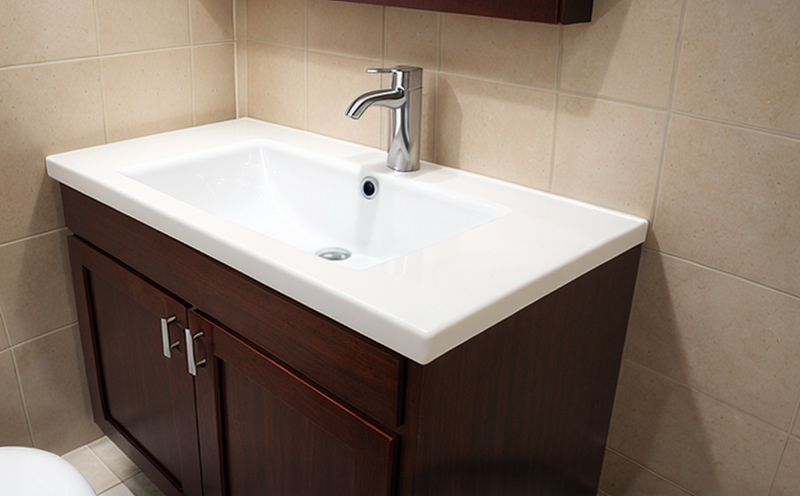BS EN 20105 Colour Fastness Testing of Plastic Sanitary Surfaces
The British Standard and European Norm (BS EN) 20105 provides a standardized method for assessing the colour fastness of plastic materials used in sanitary applications. This test is crucial for manufacturers, quality managers, compliance officers, and R&D engineers to ensure that products meet regulatory standards and customer expectations.
Plastic sanitary surfaces are exposed to various environmental factors during their lifecycle, including humidity, temperature fluctuations, cleaning agents, and frequent abrasion. These conditions can cause the pigments in plastic materials to migrate or fade, leading to aesthetic issues and potential health concerns if certain chemicals leach out. BS EN 20105 addresses these challenges by offering a comprehensive approach to evaluating how well plastic surfaces resist colour changes under simulated use conditions.
The test procedure involves exposing the specimens to specific environmental factors that mimic real-world scenarios encountered in bathrooms and other sanitary settings. Specimens are then visually inspected for any signs of discoloration or fading after exposure. This ensures that products maintain their appearance over time, which is essential for maintaining consumer confidence and satisfaction.
| Parameter | Description |
|---|---|
| Humidity | Absolute humidity of 100 ± 5 g/m³ at a temperature of (40 ± 2) °C. |
| Light Exposure | Continuous exposure to xenon arc lamps with an irradiance of 60 W/m² in the spectral range from 300 nm to 1150 nm for (48 ± 2) hours. |
| Cleaning Agents | Exposure to a mixture of water and household cleaning agents, simulating real-world washing conditions. |
| Abrasion Resistance | Testing the resistance to abrasion using a sandpaper or similar abrasive material. |
The testing process is designed to be rigorous and reproducible, ensuring consistent results across different laboratories. By adhering strictly to the guidelines outlined in BS EN 20105, manufacturers can produce high-quality plastic sanitary products that meet both regulatory requirements and customer expectations.
Scope and Methodology
- Objective: To evaluate the resistance of plastic surfaces to colour changes due to environmental factors such as humidity, light exposure, cleaning agents, and abrasion.
- Specimen Preparation: Specimens should be cut from production lots or batches and prepared according to the standard's specifications. They must represent the intended use of the product.
- Environmental Exposure: Specimens are exposed to controlled environmental conditions that simulate real-world usage, including humidity and light exposure.
- Cleaning Simulation: Specimens are subjected to cleaning simulations using water and household cleaning agents as per the standard's instructions.
- Abrasion Testing: Abrasion resistance is tested by exposing specimens to abrasive materials under specified conditions.
Industry Applications
- Bathroom fixtures such as sinks, toilets, and bidets.
- Kitchenware including countertops, splashbacks, and other surfaces.
- Sanitary products like urinals, hand dryers, and waste bins.
- Medical devices that require high aesthetic standards.
Customer Impact and Satisfaction
Ensuring colour fastness in plastic sanitary surfaces is critical for maintaining the appearance and functionality of products over their lifecycle. This, in turn, contributes to customer satisfaction by delivering reliable performance and aesthetic appeal.
By adhering to BS EN 20105, manufacturers can demonstrate compliance with relevant standards, which enhances brand reputation and market credibility. Additionally, it helps in meeting the expectations of regulatory bodies and international markets, thereby reducing the risk of product recalls or non-compliance issues.
Consumer confidence is directly linked to the quality and durability of plastic sanitary products. By ensuring colour fastness through rigorous testing, manufacturers can build trust with their customers, leading to increased customer satisfaction and loyalty.





